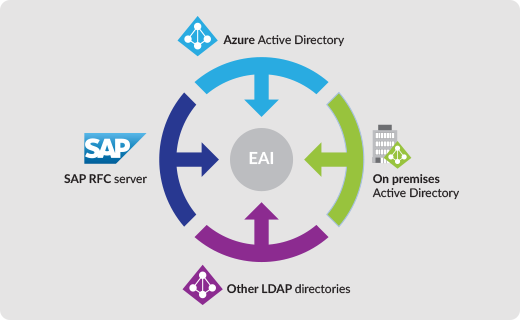Letter is a cloud-based document composition software that enables the standardization of all written documents issued by your company. The management and control of your company’s written communication is guaranteed.
What if your company has to generate large quantities of standardized and personalized documents?
Letter works like a document factory. It is the ideal solution for organizations that produce a high volume of complex, template based documents on repetitive process: letters, statements, invoices, marketing materials, reports, e-mails, etc.
To work like a factory, letter needs data, which is already available in your line-of-business applications. Letter easily integrates with your existing business processes to act as a reliable document generation solution. Whenever your business system has to generate documents, it feeds data into letter’s web services and final documents are produced.
All your documents will be standardized in three easy steps: create master, produce template and generate documents.
You have to generate thousands of personalized documents to your employees each year. These documents have to be issued in different languages. You have a main employee system of record and an ecosystem of satellite HR applications, each one with its own engine to generate documents. Letter will help you centralize all document generation needs, allowing you to create new templates that comply with legal norms.
You have to be sure that corporate documents comply with legal norms and regulations. This is a very difficult task without a system of document control. Letter will provide you with the ability to easily generate masters and templates with protected fields, which avoid the risks of intentional or deliberate tampering. Letter will also help you protect the access to sensitive data, by determining who can view and edit each specific template.
All Quality, Health, Security and Environment (QHSE) documents (operations manual, quality manual, maintenance procedures, training procedures, job descriptions, etc.) have to be always updated and available to the whole company.
Documents need to be periodically revised, so that new processes and improvements are introduced. Updated versions have then to be made available at all work sites and locations. Obsolete versions have to be removed and archived.
Letter will make document generation and updating easier tasks, ensuring compliance with legal norms and corporate visual coherence. You can quickly generate new templates and documents that will be available to employees from any electronic device connected to the internet.
The master is the first layer in document generation. It defines the global aesthetics of the document (e.g. corporate logo, text styles, table formatting, chapters, table of contents and other references, headers, footers, images).
As a master editor, you will define blank areas in your document, which will be editable by the template editors.
Any changes in the master will be propagated to all its templates.


The template document inherits all the styles and formatting defined by the master editor.
However, the master is protected and does not allow modifications by the template editor. He/she is able to customize the editable areas, creating the content that will define the template’s function (e.g. onboarding letter, bonus letter, customer invoice). The template editor is also able to create a data source by specifying which fields will be used in the document.
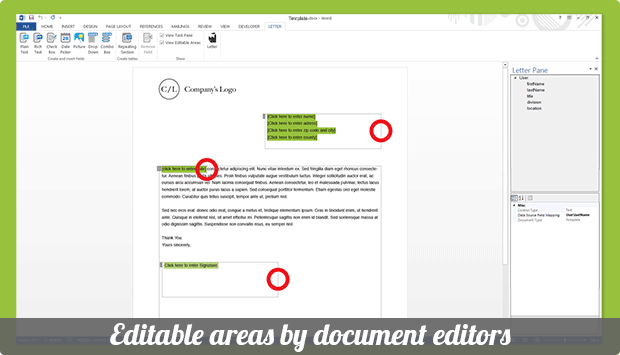

The final document inherits all the styles, formatting and content fields defined in the template.
The values for the content fields are provided by a web service integration with line-of-business applications. This functionality enables the easy and quick production of a high volume of documents.


To work like a factory, letter needs data, which is already available in your line-of-business applications. Letter easily integrates with your existing business processes to act as a reliable document generation solution. Our team will work with you to setup the most reliable and cost effective integration solution.
In complex technological scenarios, the master data required to generate documents has to be collected from multiple systems. An integration layer implemented on a corporate Enterprise Application Integration (EAI) software - like SAP HANA cloud Integrator of SAP Process Integration – will be the glue between your application and Letter.
In simple scenarios, a customized integration layer can be developed and deployed in your datacenter network.
Letter has a ready-to-use tool for integration with SuccessFactors Employee Central. The Letter cloud extension to SuccessFactors allows you to generate corporate HR documents for you as an employee or about your team as a manager.
The SAP Hana cloud extension relies on the security configuration of SuccessFactors to show the Letter homepage title to authorized users, as well as the available actions to generate HR documents. The integration layer collects employee data from SuccessFactors OData integration endpoints, provides the master data to Letter and receives back a corporate HR document.
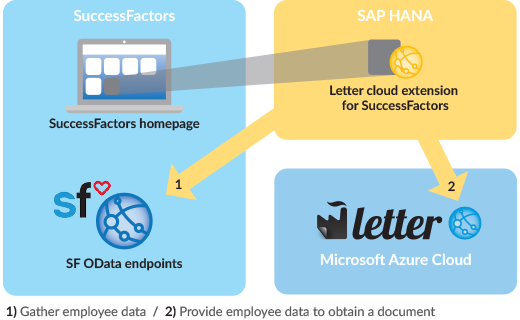
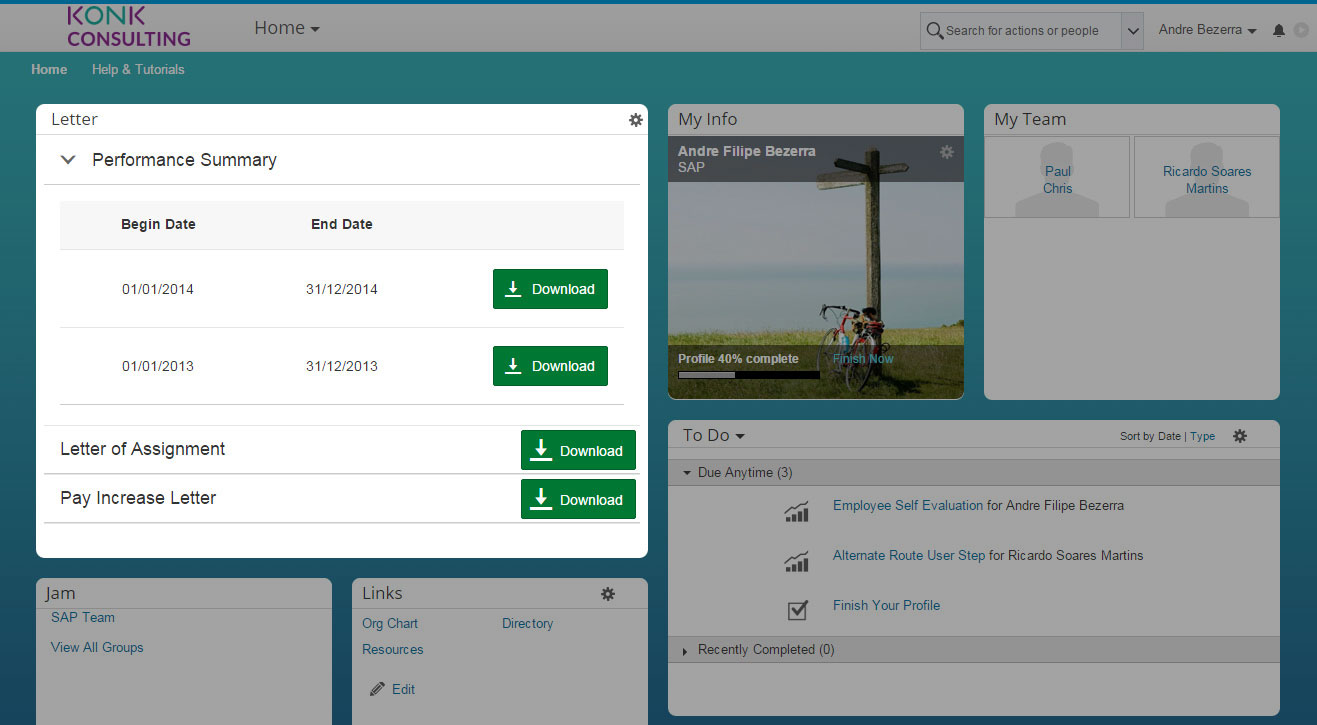

Master data can be fetched from any system or application that implements web services. OData/REST web services are the current trend for data integration. SOAP/XML web services are long time standards for data exchange.
In HR scenarios, SuccessFactors, SAP Gateway and SAP RFC calls through ICF are the most used sources to collect employees’ master data.
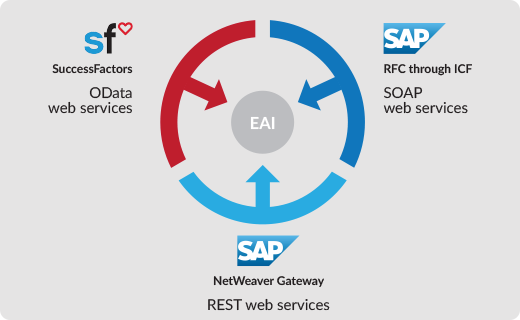
Master data can be fetched from any web application that implements web services. Any .NET application that implements ASP.NET WebAPI, OData or WCF Data Services is able to expose OData/REST or SOAP web services. The same is true for Java EE web applications that implement Apache Olingo, odata4j, JAX-RS or JAX-WS.
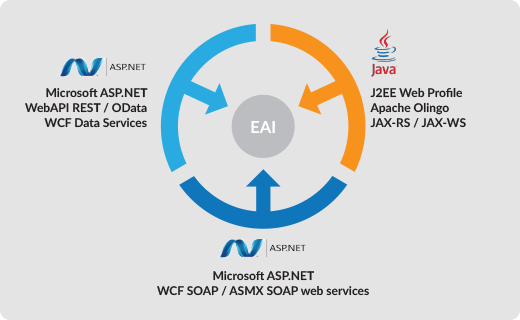
Master data can also be fetched directly from corporate databases. All relational database engines provide a standard connectivity protocol like ODBC or specialized protocols like ADO.NET or JDBC.
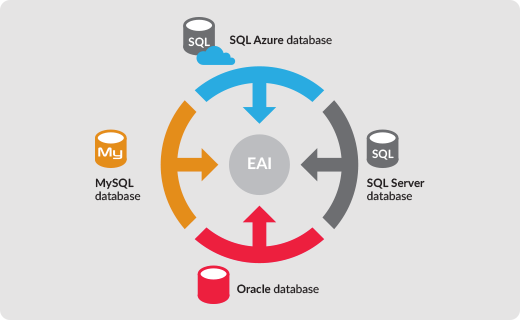
All mid-sizes and large companies have some form of corporate directory. They are a common source for employee data and other resources. For directory data in the cloud, Microsoft offers Azure Active Directory Graph REST API. On premises directory services expose an LDAP API interface.
Proprietary binary protocols can also be used for integration scenarios. One common case is the direct invocation of SAP RFC’s through an RFC server.
